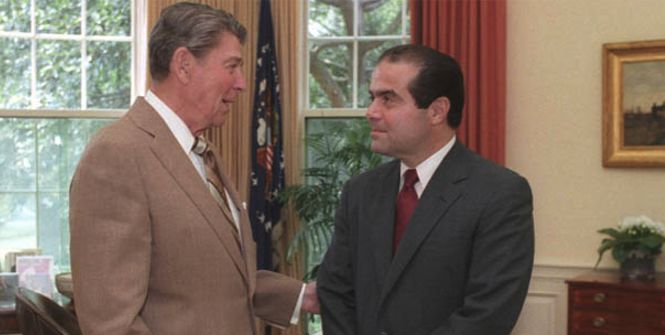Filling the Empty Seat: the US Supreme Court Gets Political

In an election year, the death of Antonin Scalia brings to light the political nature of the US judicial system. Given the overwhelming influence and perceptions of partisanship of justices, it is clear that the Supreme Court has a distinct role in the US political system.
The sudden death on 13 February of Antonin Scalia, resident ‘enfant terrible’ and conservative originalist of the United States Supreme Court, has sent shockwaves through Washington’s political establishment and underlined the partisan deadlock already at breaking point in an election year.
Like all judiciaries, the US Supreme Court is intended to protect citizens from legislative overreach. At independence it adopted an unorthodox policy of awarding lifetime tenure to justices to allow them to form judgements free of political constraint and public pressure.
The recent vitriolic debate over who should have the right to appoint Scalia’s replacement, and even suggestions that the White House was behind the Justice’s death, have shown that the court is not above partisanship.
Indeed, rather than affirming the role of the Court as an impartial arbiter of constitutional disputes, Republicans and Democrats alike have been stressing the importance of seizing the appointment opportunity before them as a means to weigh future rulings in their favour. This is particularly relevant in an election year. Scalia constituted the crucial fifth vote in what until February was a court with a conservative majority. Not only does such speculation embolden concerns regarding the stability of America’s political system but it highlights two issues with its Supreme Court that limit its judicial independence and may also have far-reaching consequences for the international community.
The first problem relates to the overwhelming influence justices wield by virtue of their lifetime terms. The average American is now expected to live almost twice as long as when the US Supreme Court tenure policy was finalised in 1788. In the past 30 years alone, the average tenure of justices of the Supreme Court has grown from an influential 15 years to a gargantuan 26.1, meaning appointees are likely to spend over a third of their lives on the bench. Presidents, and in this case displeased oppositions have therefore been eager to nominate increasingly younger candidates (Scalia was only 49 when appointed by President Regan in 1986) so as to extend their “mark on history” as much as possible.
Second, in the environment of greater partisanship that has characterised the US in recent times, the conduct of Supreme Court justices has fuelled perceptions of partisanship. For example, although known to own stock in companies with interests in certain cases, conservative Justices Alito and Roberts have not recused themselves from any related judgments – and indeed ruled in the interests of their shares in more than 70% of all decisions; the Liberal Justice Ginsburg is also known to have endorsed and supported the advocacy fund “NOW” that was simultaneously involved in Supreme Court arguments before her. This would not be accepted in an Australian court.
Optimistically, pundits and members of either side of the aisle are waking up to this problematic reality and searching for possible solutions to bring the institution back in line with its original function and intention. The radical suggestion of limiting appointees to 10 year terms would likely render the court redundant. This would mean that every decade could potentially usher in a completely different bench and spelling ruin for America’s economy in what would ultimately become an increasingly unstable political environment. More pragmatic suggestions have ranged from implementing a policy of mandatory retirement the age of 70 – as is common in most European nations and Australia – or limiting any term to a maximum of 18 years. This would give appointees the opportunity to weather political change while tempering the extent of their influence, which is more in line with a fast-changing-modern America.
However, it is unclear whether such modifications to the tenure system would require constitutional reform (the last amendment having taken 203 years to progress from proposal to ratification) or if legislation alone would be sufficient. In the second case the likelihood of legal appeal means it is possible that Supreme Court Justices may one day have to rule on the legality of limiting their own tenure, only further complicating what seems to be an increasingly impenetrable Gordian knot.
Although girt by sea and seemingly sheltered from such storms in its judicial system, Australia would do well to pay attention to the developments taking place in the US Supreme Court at such a tumultuous time. With decisions on abortion, voting rights, freedom of speech and euthanasia fast approaching, not to mention immigration and asylum, both the precedents set by and consequences of these decisions are likely to have far-reaching effects for years to come.
Natalia Beghin is currently completing her Masters of International Affairs at the Australian National University. This article is published under a Creative Commons Licence. It may be republished with permission.





